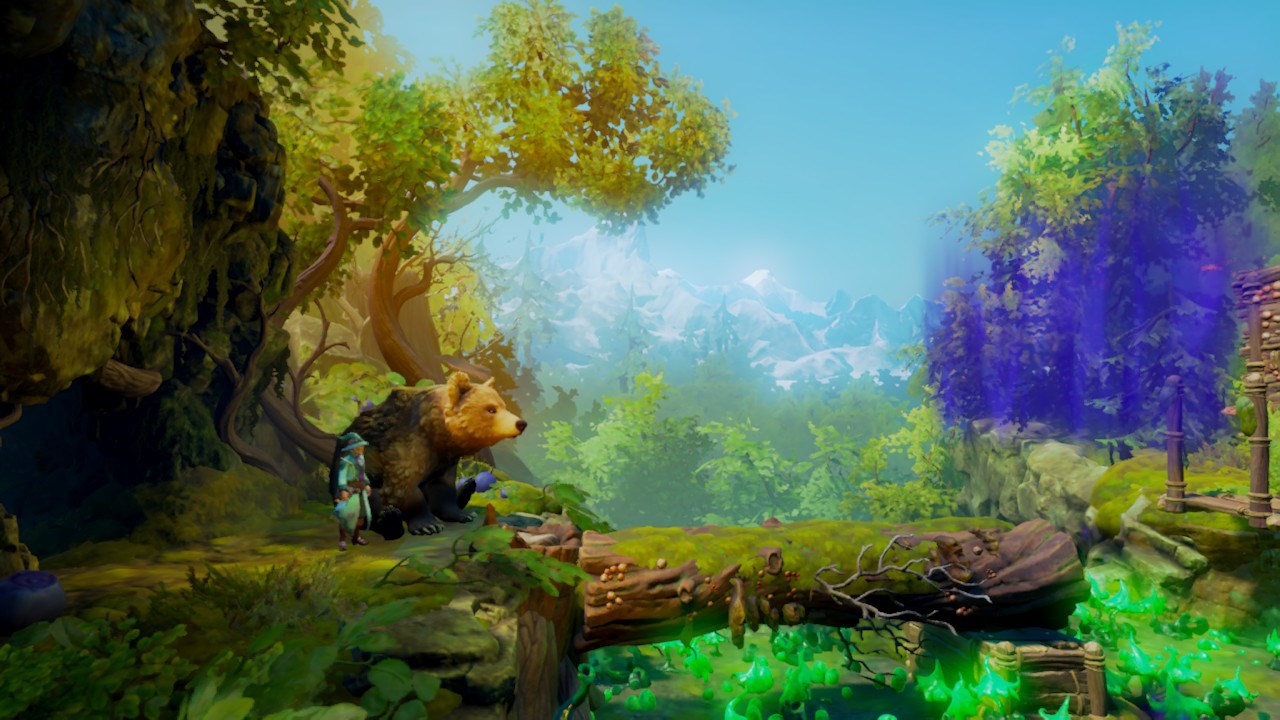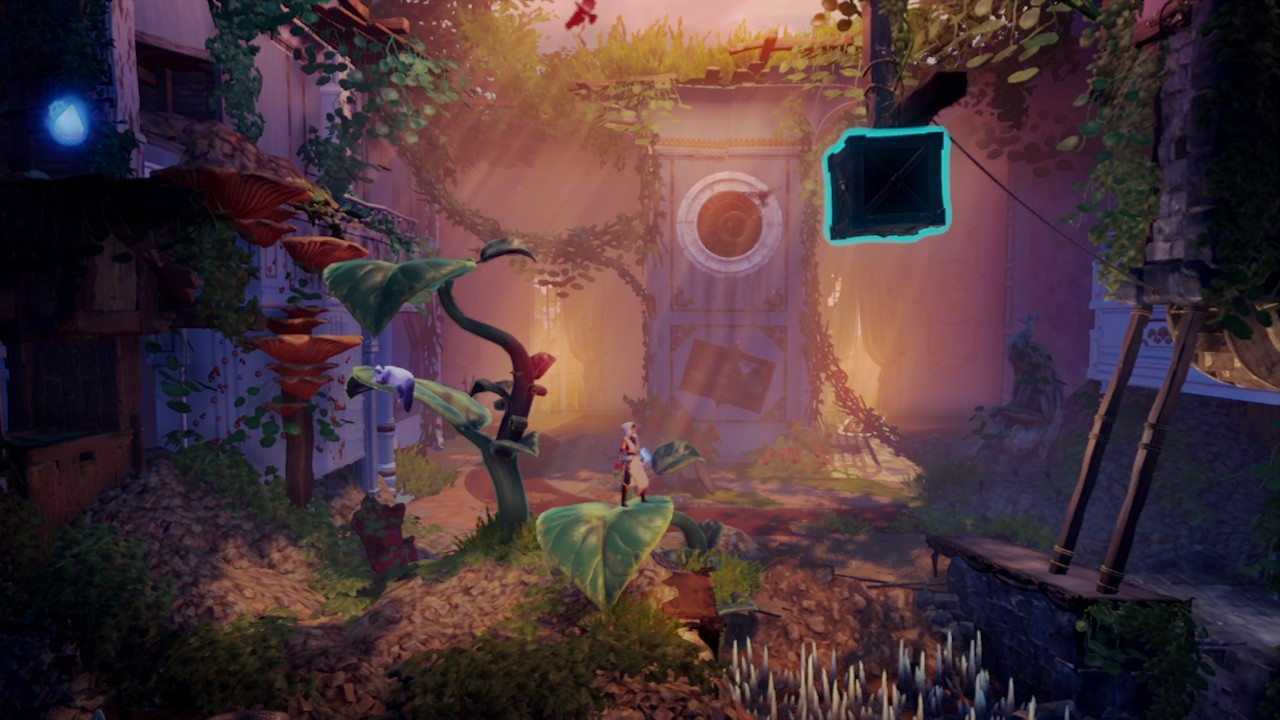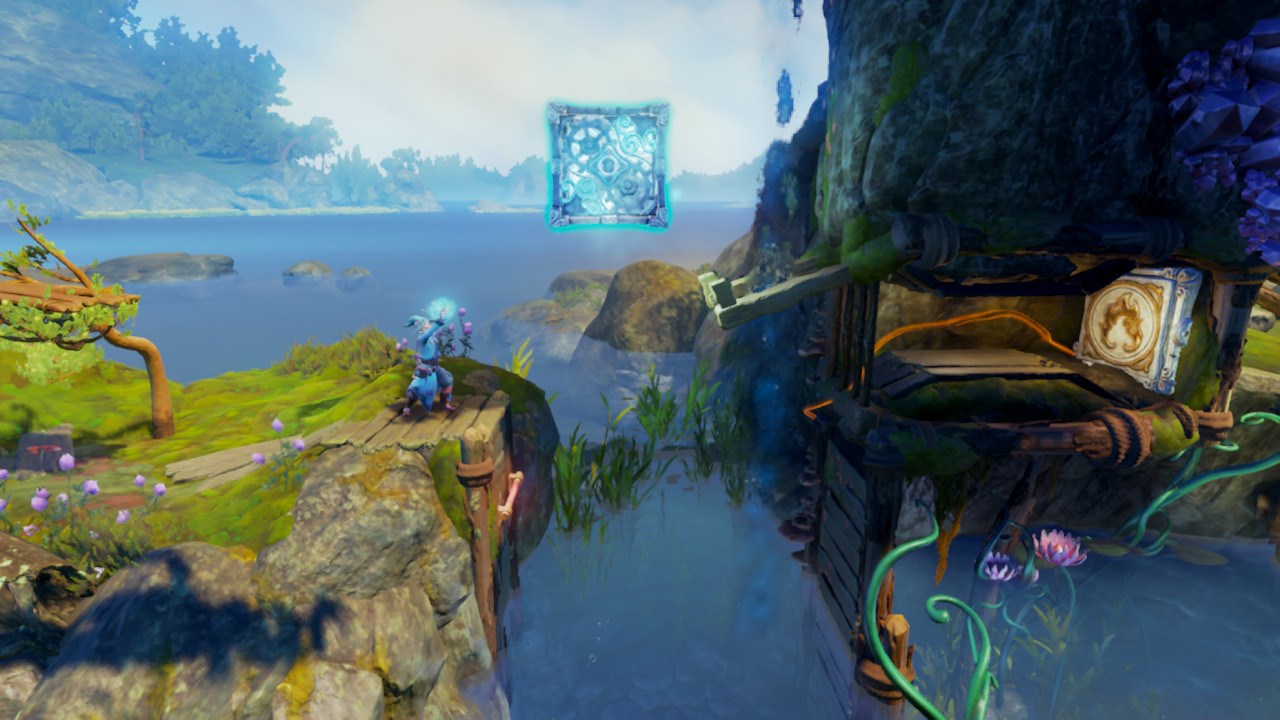Trine 4 Review
A mainstay of indie platforming returns.

There’s a relaxing simplicity to platformers. Mario really did establish fundamental truths that live on in the DNA of video games. Mainly that movement through 2D and 3D space is a delight. Platforming mechanics in all their proliferations are an important genetic mark on the medium.
Trine as a series has excelled in marrying these fundamentals with a puzzle game format. In its fourth iteration, the team at Frozenbyte have delivered a game that is familiar within the formula they have crafted. However, the game stays rigidly within that formula and the greatest of emotions it stirs is centred on the odd obtuse puzzle.

For the last ten years, the Trine series has been a staple of the indie game scene. Trumpeting its 2.5D perspective, players take control of three characters solving puzzles in a fairytale land. They all have stereotypical high fantasy roles as warrior, rogue and wizard which they use to solve puzzles involving blocks, mechanisms and dastardly inventions such as the locked door. Whilst the action has mostly taken place along a 2D plane, the environments are all crafted and rendered in 3D. It’s a nice dynamic view that has separated Trine from a lot of its contemporaries in indie games.
Trine 4 continues the trend by being beautiful to look at. The colour palette alone is awash with vibrant shades of purples, blues and oranges in this fantasy land, treating the player to gorgeous sunsets and frozen vistas. The music does a good job of situating the player within these landscapes. It never interferes but it always feels appropriate for the setting. The menu music, in particular, is relaxing and evocative in equal measure – something that can be listened to in the background but that conjures that feeling of looming adventure.

Often in larger games, there are so many intricate systems and levels of detail that adequate tutorials could not possibly begin to decode them (looking at you Monster Hunter: World). Even with the simple platforming premise, Trine 4 eases players into the game naturally. Concepts are introduced well and with plenty of lead into their puzzling depths further down the road.
It helps that the camera shifts effortlessly from puzzle to puzzle in a smooth manner. But it manages to do this in a way which still shows off the terrific visuals and the background scenes you don’t want to miss. What this creates is a natural flow which is difficult to achieve in a puzzle game. Usually, you might find points where a particular puzzle will stump the player for minutes but Trine 4 manages to avoid the worst of this through its flowing levels.

Despite this flowing nature to the levels, they do, on several occasions, threaten to overstay their welcome. Whilst movement through a level can be relatively untaxing, the long length of them does make the experience repetitive. The flow comes from puzzles that might present an issue for a few seconds but are easily resolved. Though this makes the game accessible for a lot of players, it can become dull to trudge through the same types of jumping puzzles again and again.
This dullness may stem from how the puzzles can be ‘solved.’ In several cases, you can brute force your way through some of these puzzles by summoning a block or two and then teleporting forward. Solutions don’t need to feel robust but there is a feeling that the designer’s intentions for particular puzzles have been trodden on.

This dullness would be easier to forgive if there was a grand motivating force, a narrative component that was compelling enough to keep players turning the page of this storybook. Our heroes are tasked with trudging after a young prince with magical powers gone wild. The plot has a touch of Disney’s Frozen about it, which is no bad thing, except the game is more interested in showing us puzzle after puzzle instead of exploring what could have been a compelling character in the prince.
As this story concept is dragged through five separate acts, it’s unnecessarily padded. Fairytales can be used to explore countless facets of the human condition, but the beautiful aesthetic platform crafted by Frozenbyte feels squandered to pursue an endless gauntlet of puzzles.
Pretty. Inoffensive. Rote. Others might find the DNA of something pure that they want to pass on to someone close: a niece or nephew, son or daughter. Trine is a series that is well worth introducing to those just getting to grips with the medium. And this installment adds to that library of introductory possibilities. But it doesn’t use the platform it has to push boundaries and explore the unknown in fairytale video games.
[Reviewed on Switch]
